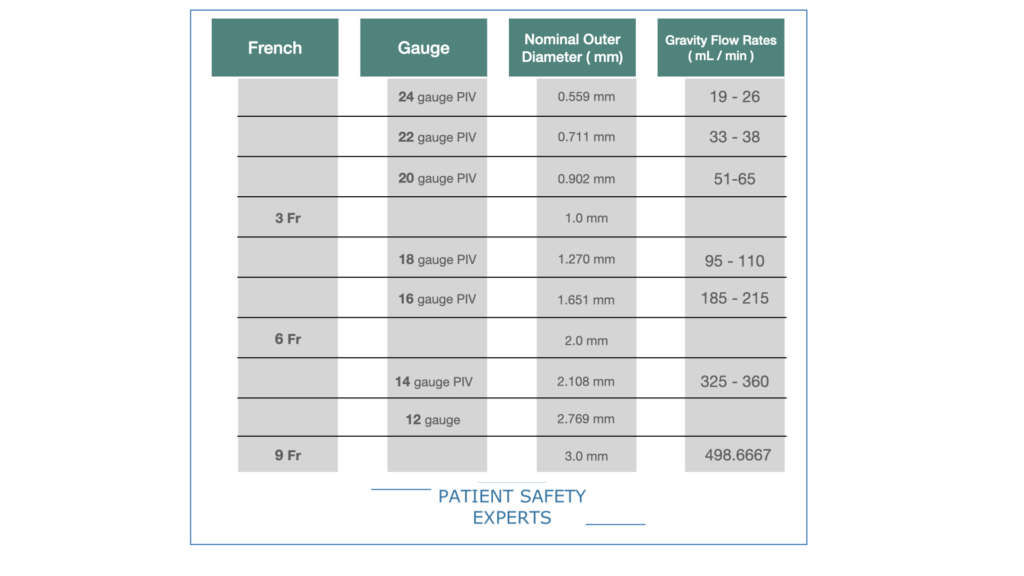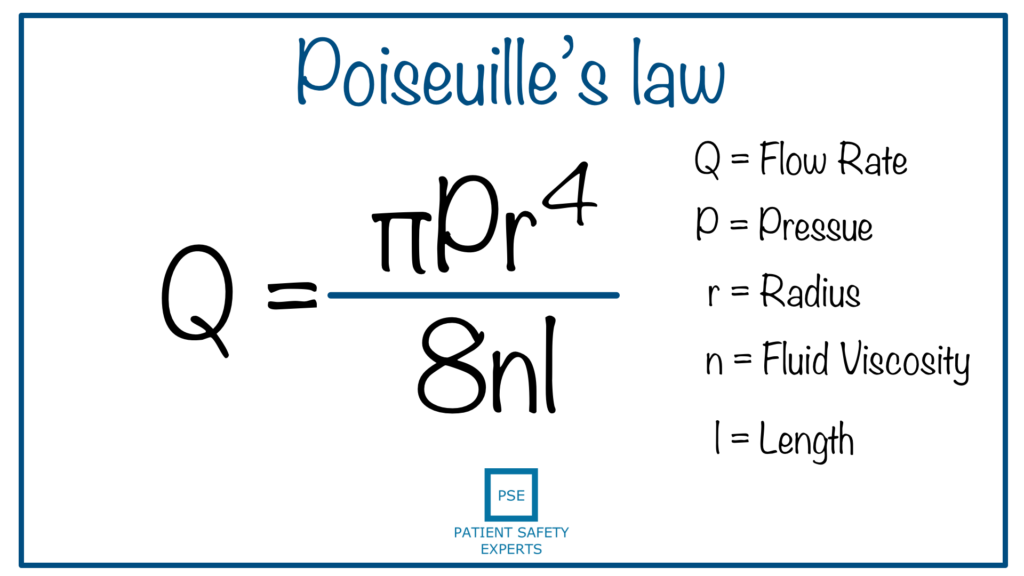By convention, peripheral IV catheters are sized in gauge, and central venous catheters (CVCs) are sized in French. This table compares French sizing to gauges for catheters with flow rates.
Comparing French Sizing to Gauges with Flow Rates

Poiseuille’s Law for IV Flow Rates
Catheter sizes are critical if you are trying to rapidly transfuse a patient during resuscitation. Flow rates through an IV catheter are determined by Poiseuille’s Law, which states that the flow (Q) of fluid is related to several factors:
- the viscosity (n) of the fluid,
- the pressure gradient across the tubing (P),
- the length (L) and
- diameter(r) of the tubing.

French Sizing of Catheters
The French size measures the outer diameter (not the internal channel or inner diameter) of a catheter/device.
French (F) is 1/3 of a millimeter. A round catheter of 1 French has an external diameter of 1⁄3 mm.
1 Fr = 1/3 mm (0.333 mm)
Dividing the French size by three can determine the diameter of a round catheter in millimeters.
If the French size is 9, the diameter is 9/3 = 3.0 mm.
Having consistency around French sizing for various devices is essential. One study sought to quantify the variation in the metric equivalent of French size in various medical devices from multiple manufacturers used in interventional radiology.
They found a wide variation in the interpretation of the French scale by different manufacturers of medical devices. They recommended that this scale either needs to be abandoned or be strictly defined and followed.

The Gauge System for Catheters
The “gauge” system categorizes the size of needles and catheters. It’s not clear exactly how this began; medical references about the definition of “gauge” are unavailable.
Gauge (G) is quite different and commonly used for peripheral IV sizing. An increasing gauge size implies a decreasing diameter.
Unlike the French system, the gauge scale does not have fixed intervals. The difference in diameter between different gauge catheters increases as the diameters get larger (smaller gauge number)
Therefore, we cannot say that a 12 gauge IV is twice as large as a 24 gauge IV.
Because of these variations, exercise caution when considering catheter/needle and guidewire combinations. Consult the manufacturer’s specifications to ascertain whether a guidewire of a particular diameter can fit through a specific catheter or needle.
References:
- Iserson KV. The origins of the gauge system for medical equipment. J Emerg Med. 1987;5(1):45-8. doi: 10.1016/0736-4679(87)90009-6. PMID: 3295010.
- https://cdn.shopify.com/s/files/1/0244/0887/files/Referencetables.pdf?4195
- Ahn W, Bahk JH, Lim YJ. “The “Gauge” System for the Medical Use.” Anesthesia & Analgesia. October 2002. 95(4): 1125










